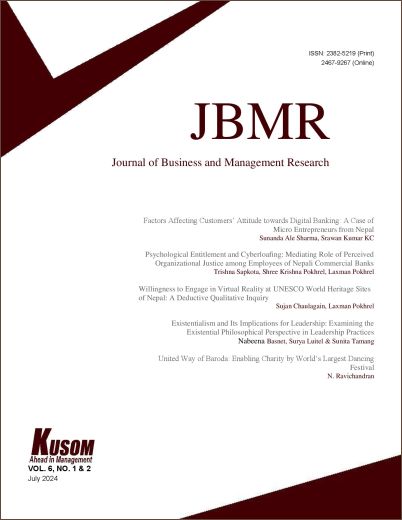Willingness to Engage in Virtual Reality at UNESCO World Heritage Sites of Nepal: A Deductive Qualitative Inquiry
DOI:
https://doi.org/10.3126/jbmr.v6i1-2.76519Keywords:
Behavioral intention, performance expectancy, thematic analysis, UNESCO world heritage sitesAbstract
Nepal is home to ten UNESCO-listed natural and cultural heritage sites, which attract a significant number of tourists from across the country each year. Despite the popularity of these heritage sites, the factors influencing visitors' willingness to engage with virtual reality (VR) at cultural heritage locations remain largely underexplored. Drawing on the Unified Theory of Acceptance and Use of Technology (UTAUT) model, this paper investigates the factors that influence the willingness to adopt VR technology in Nepal’s cultural heritage sites. Specifically, it explores the key drivers behind visitors' decisions to engage with VR during their visits. Using a deductive qualitative analysis (DQA) approach, we conducted interviews with ten visitors to cultural heritage sites who had prior experience with VR technology. The data was analyzed using Braun and Clarke’s six-step process of reflexive thematic analysis. Our findings indicate that performance expectancy and facilitating conditions are the most significant factors influencing the willingness to engage in VR tourism, followed by effort expectancy and social influence. These findings offer valuable insights for heritage site managers, enabling them to develop and promote service packages that incorporate VR technology, enhancing the visitor experience and engagement at cultural heritage sites.
Downloads
Downloads
Published
How to Cite
Issue
Section
License
Copyright (c) 2024 Kathmandu University School of Management

This work is licensed under a Creative Commons Attribution-NonCommercial-NoDerivatives 4.0 International License.
This license enables reusers to copy and distribute the material in any medium or format in unadapted form only, for noncommercial purposes only, and only so long as attribution is given to the creator.




